The Furniture: Saloon Kitsch in "How the West Was Won"
 Monday, April 4, 2016 at 10:30AM
Monday, April 4, 2016 at 10:30AM
New Series. Daniel Walber talks production design each Monday morning in "The Furniture"
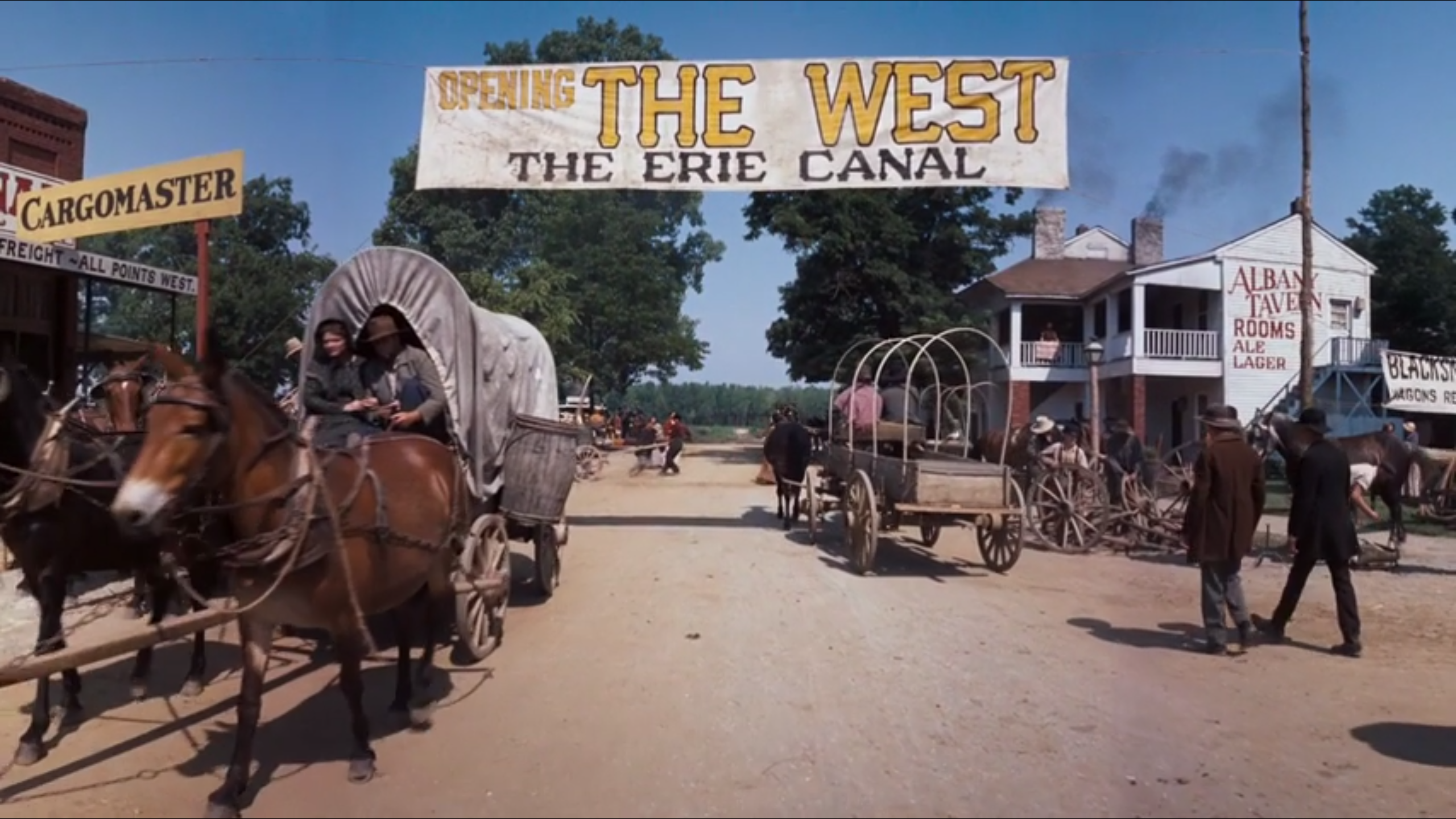
Gregory Peck, whose centennial we’ll all be celebrating tomorrow, was in a grand total of six films that were nominated for Best Production Design. Two of the best, To Kill a Mockingbird (the only winner) and Roman Holiday, will be featured in this week’s Hit Me with Your Best Shot. And so, in the interest of spreading the love, I’ll talk about a very different: 1962’s Cinerama epic, How the West Was Won.
The film, though it tells the story of a single American family, is broken up into five distinct sections. Peck is only in one of them, “The Plains.” This is actually good for our purposes, because it’s one of the three directed by Henry Hathaway. The John Ford and George Marshall chapters are much more about landscapes than sets, perhaps because they found the task of filling up the wide Cinerama frame with furniture to be too tedious.
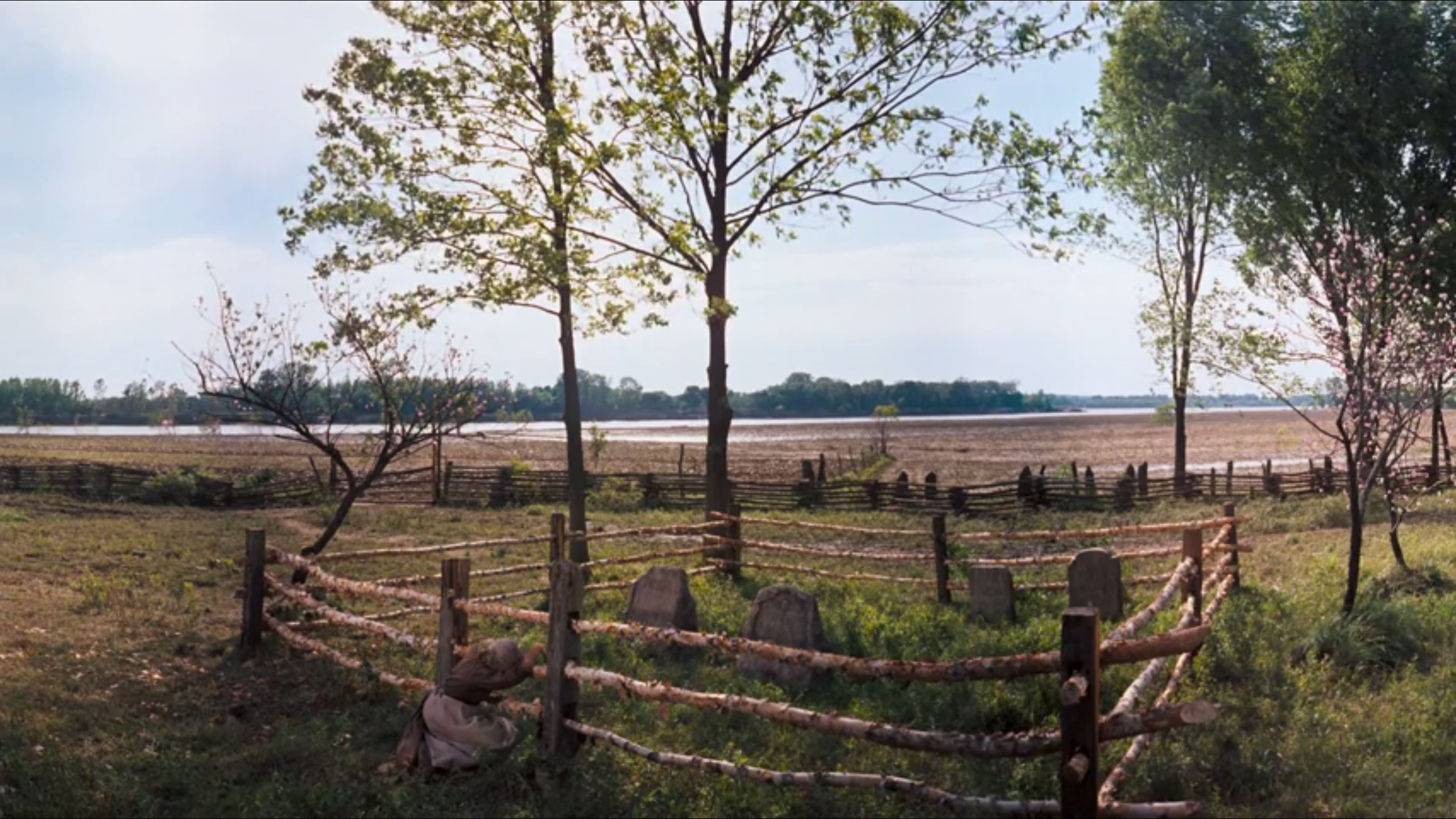
Hathaway embraced the madness, however, and it makes all the difference. How the West Was Won is a cinematic victory lap for Manifest Destiny, an alternately uncomplicated and incoherent paean to the white conquest of the West. This can easily make it fall flat to 21st century eyes, particularly in its more earnest moments of breathtaking scenery and triumphalist narration (from Spencer Tracy).
But in Hathaway’s segments, with their exaggerated and falsified versions of Western style, suddenly it becomes kitsch...
It starts with the signage. Here’s an independent shop-owner on the side of the Mississippi River, hawking “likker” out of a cave up the hill.
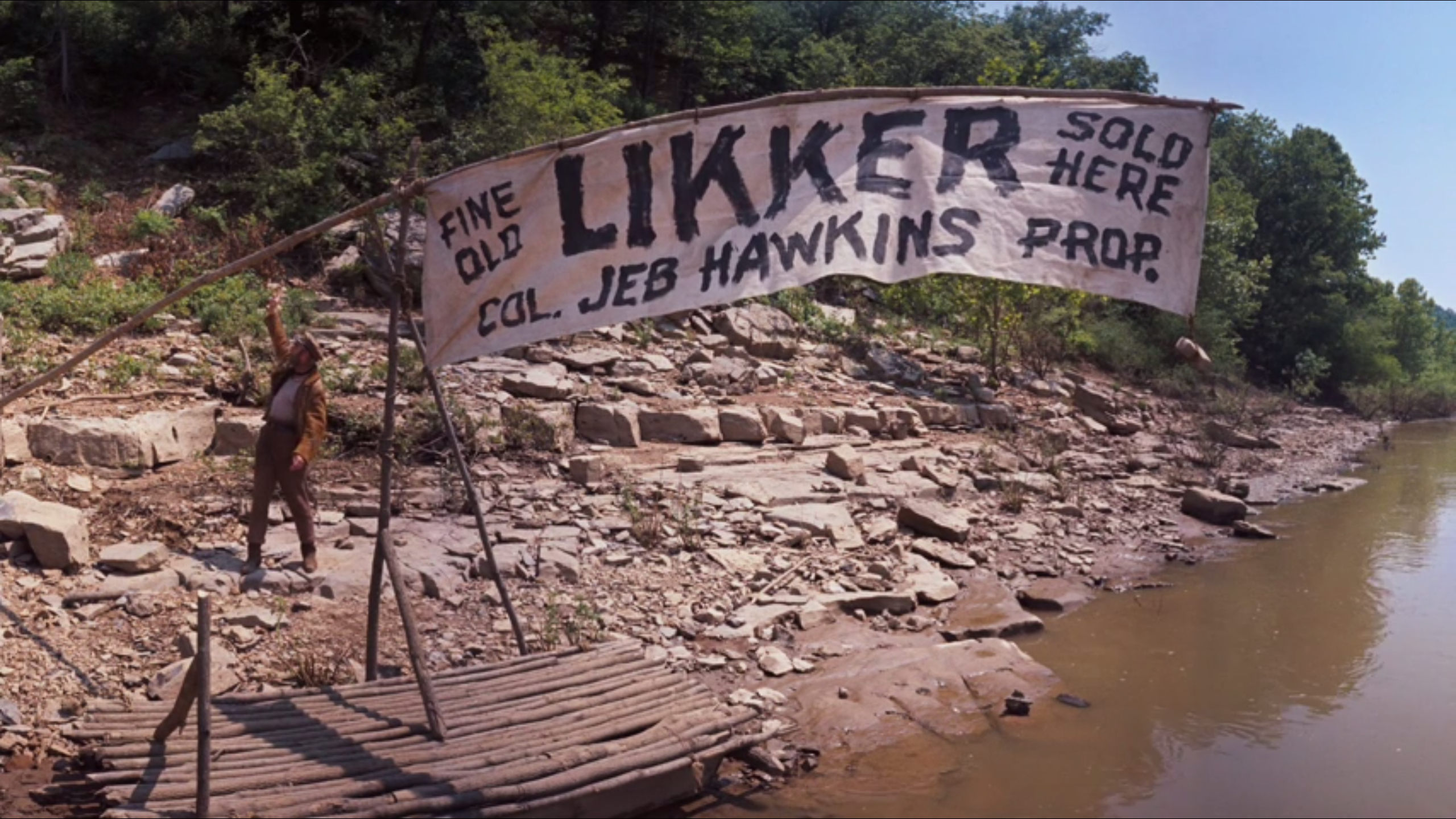
The shop itself is a bizarre array of torches and jugs of whiskey, sitting in front of a raggedy American flag with 26 stars.
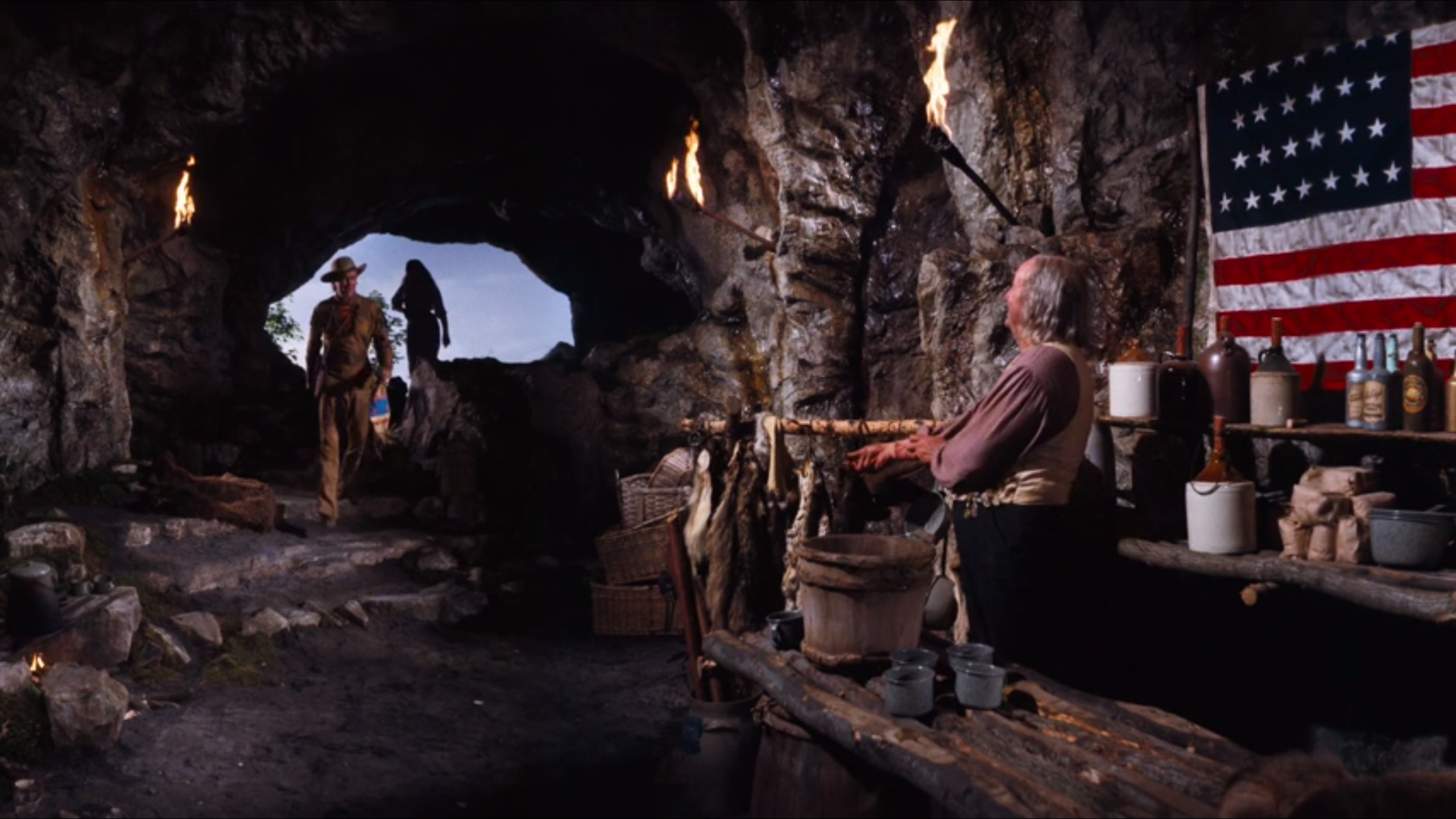
Yet the kitsch really gets swinging in the second part, when the film catches up with Lily Prescott (Debbie Reynolds) in a St. Louis music hall.
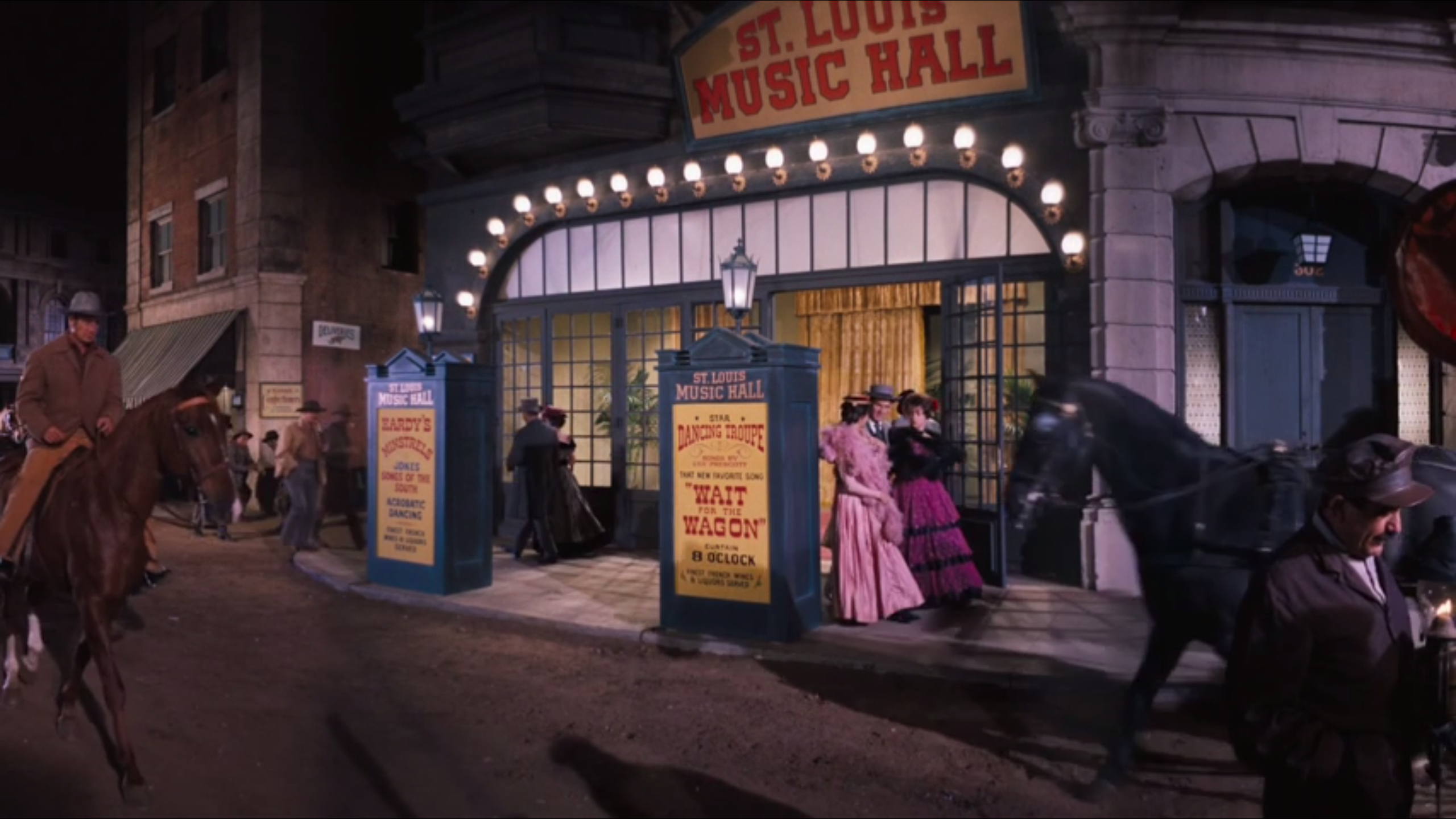
She stands in a transparently ridiculous approximation of a 19th century music hall, performing on a set that itself is an even sillier suggestion of a Western homestead. There’s a horse and carriage but no roof to stand between the striped wallpaper and the fabricated bright blue sky.
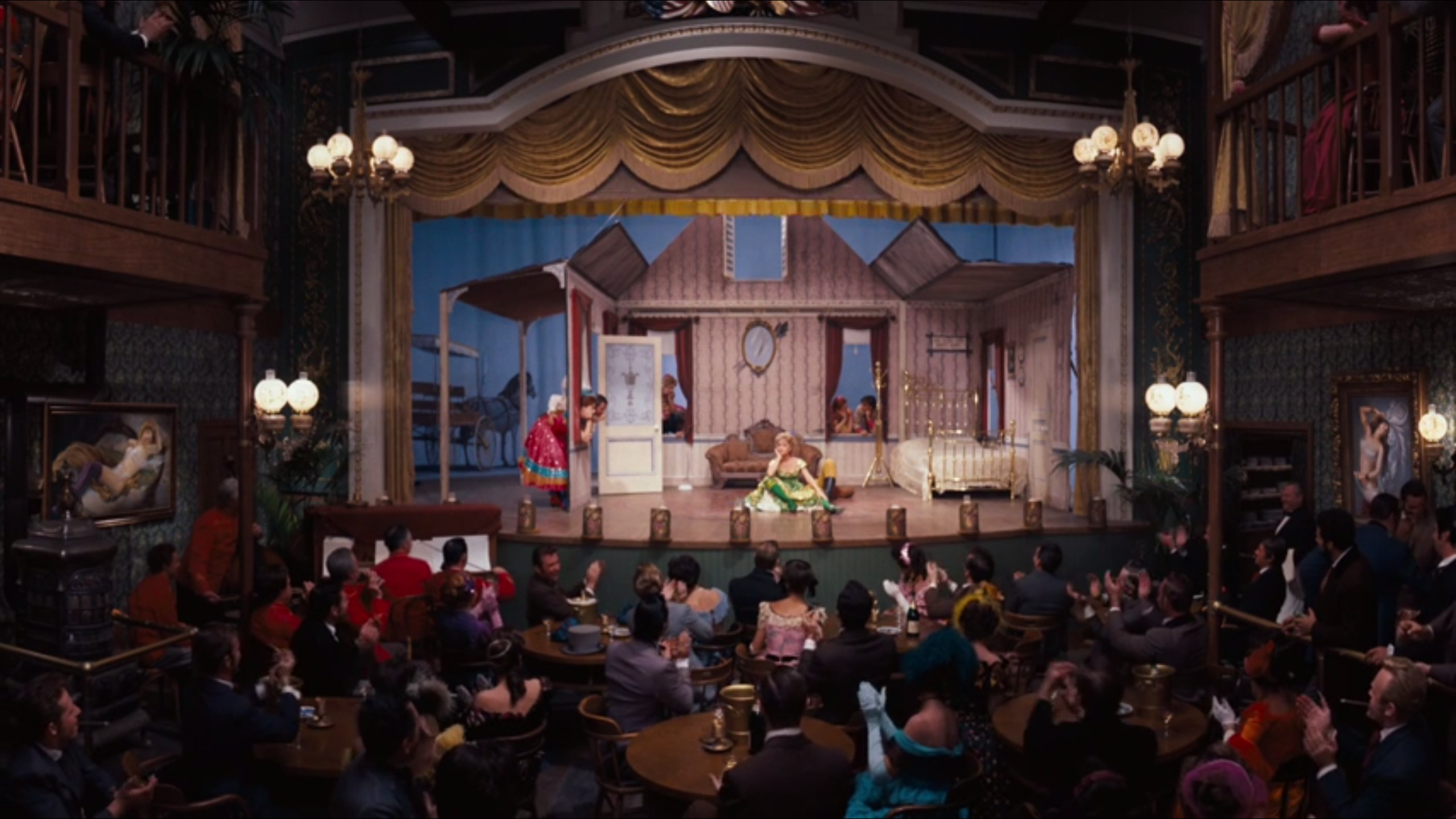
It’s here where Lily is first discovered by Cleve Van Valen (Peck), a gambler down on his luck. He overhears that she’s inherited a gold mine in California and so he follows her across the country in a wagon train, complete with enormous traditional covered wagons and a husband-hunting Thelma Ritter.
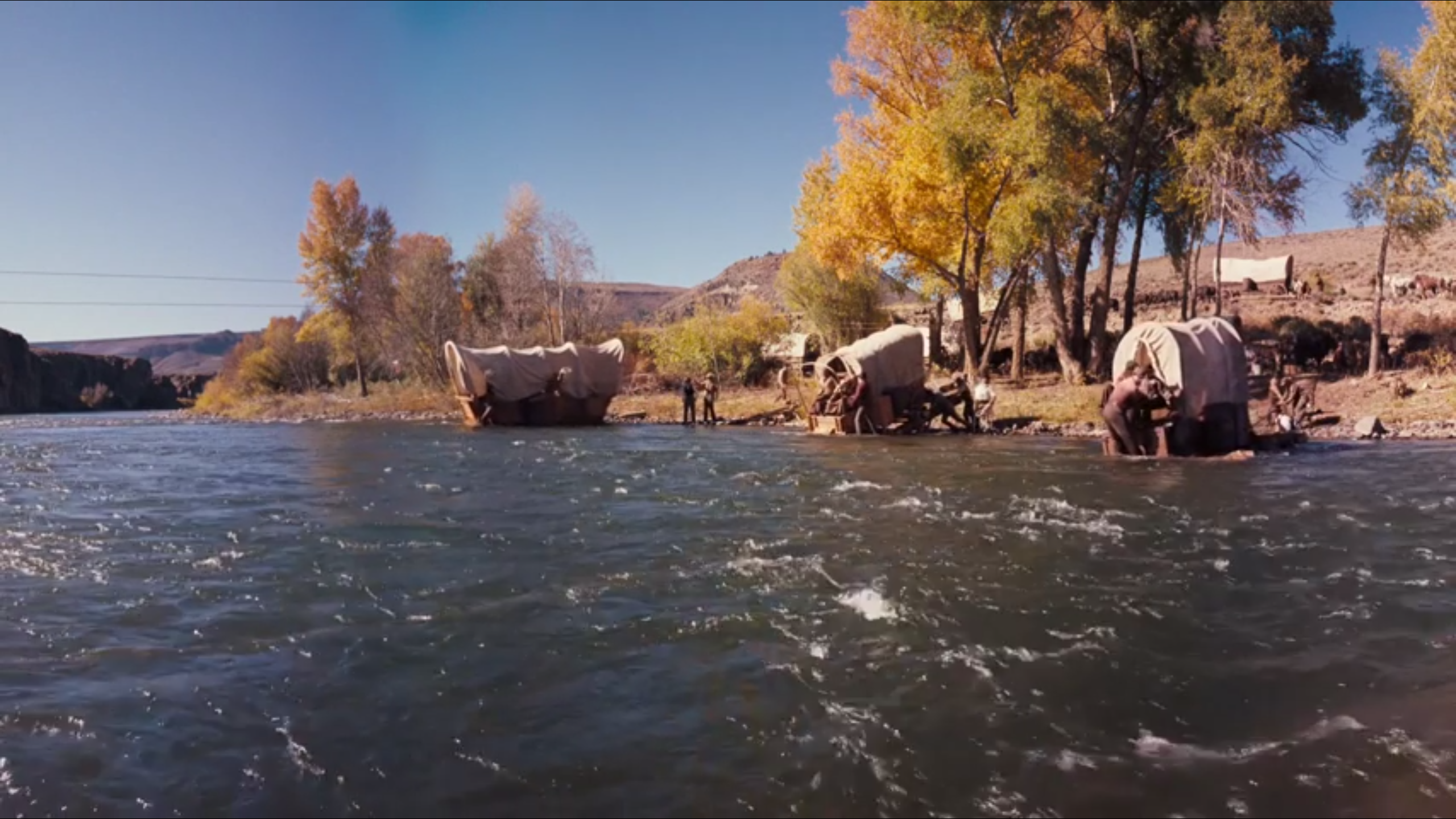
But fate intervenes and Lily ends up working in a “tent show.” The ornate, exaggerated Western style of the St. Louis theater is now replaced by an almost minimalist variation on the same theme: a whole theater made of canvass signs, all of them in identifiably 19th century “Old West” fonts!
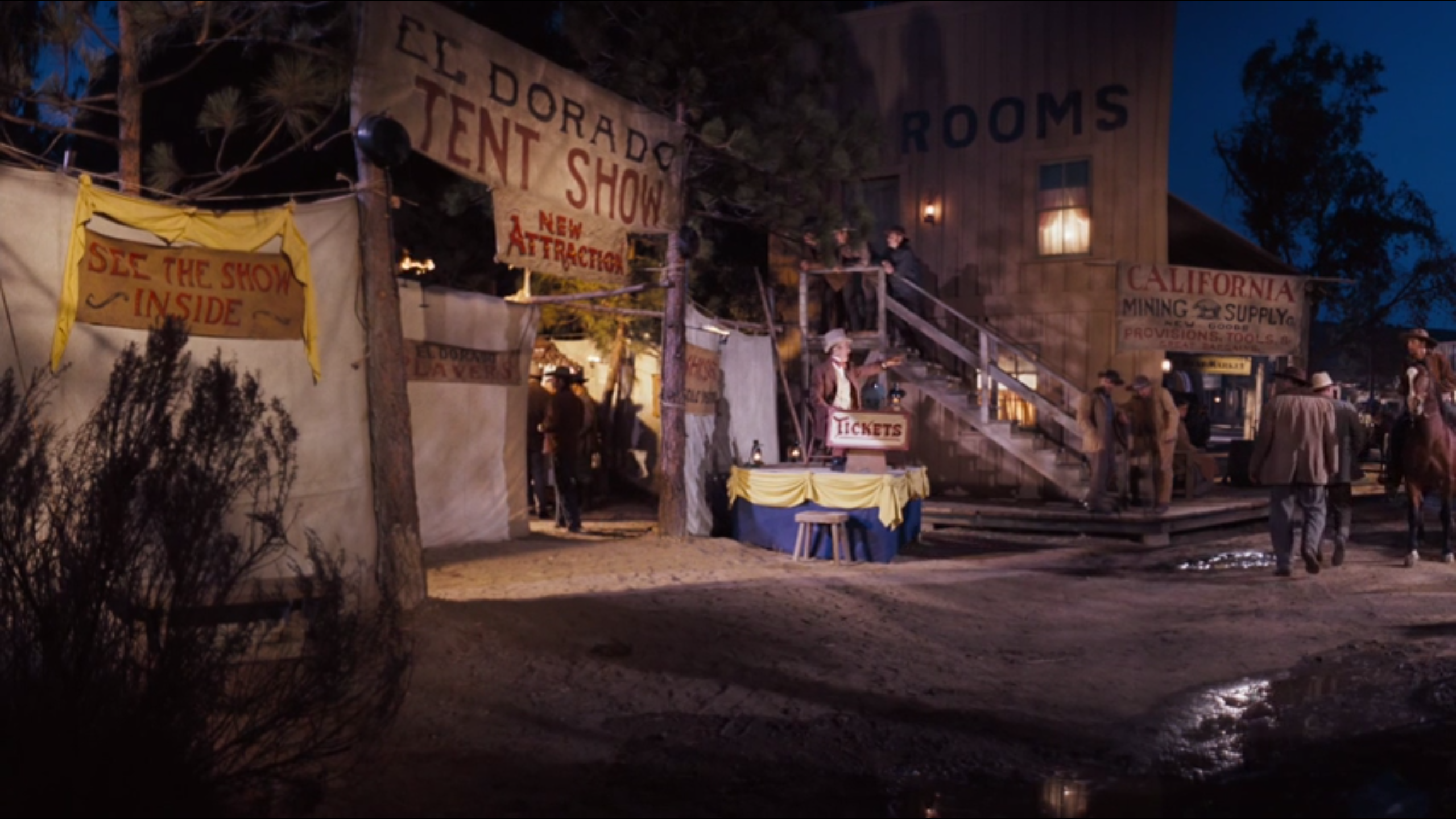
She doesn’t even get the dignity of a set, but rather finds herself prancing about in front of even more advertisements. It’s practically dystopian. (That said, respect the fact that the flag all the way to the right now has four more stars. We’ve jumped from 1839 to early 1851.)
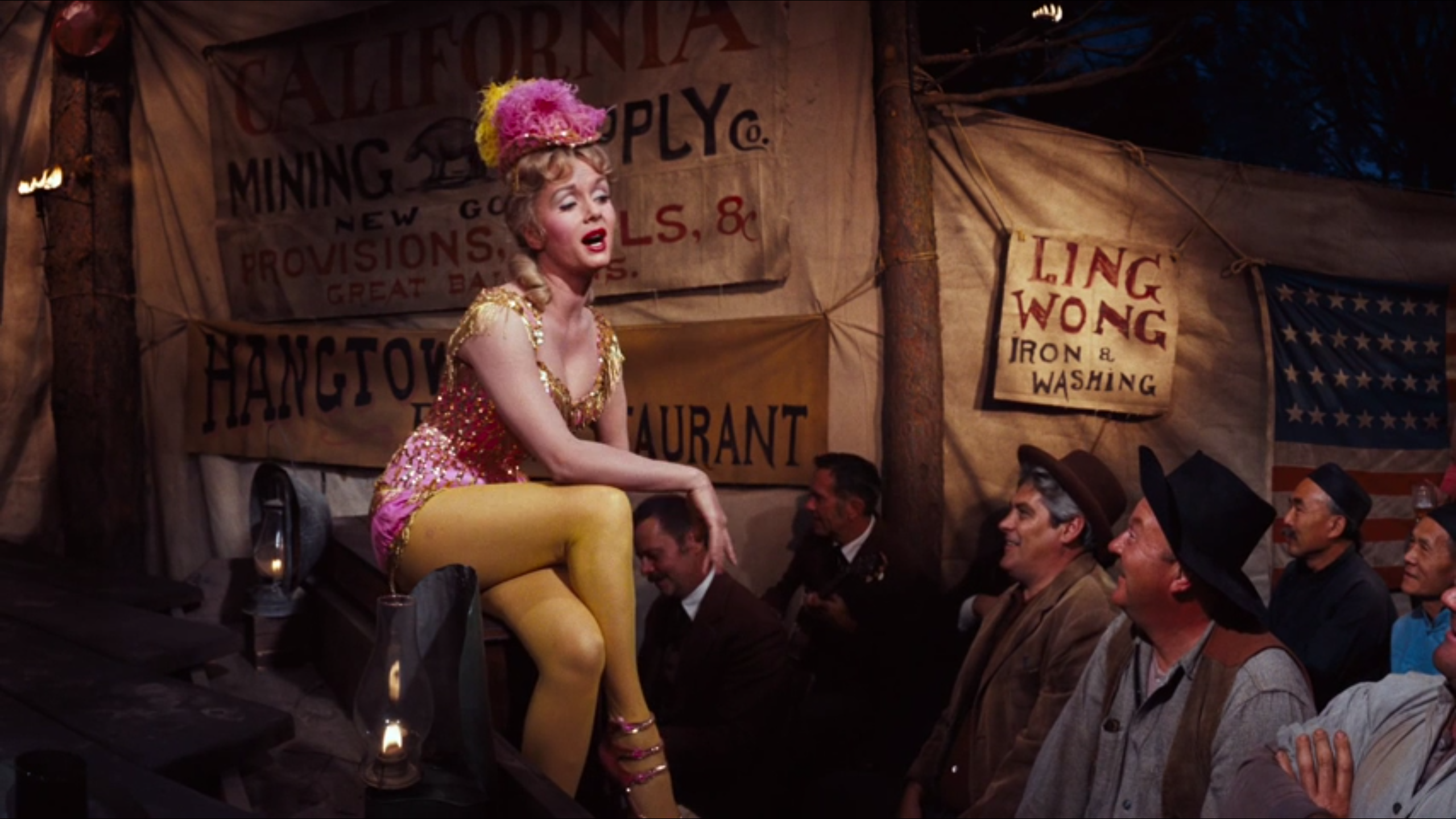
But wait, there’s more. Lily and Cleve hook up again on a steamboat a few years later. The interior is more opulent than anything we’ve seen thus far.
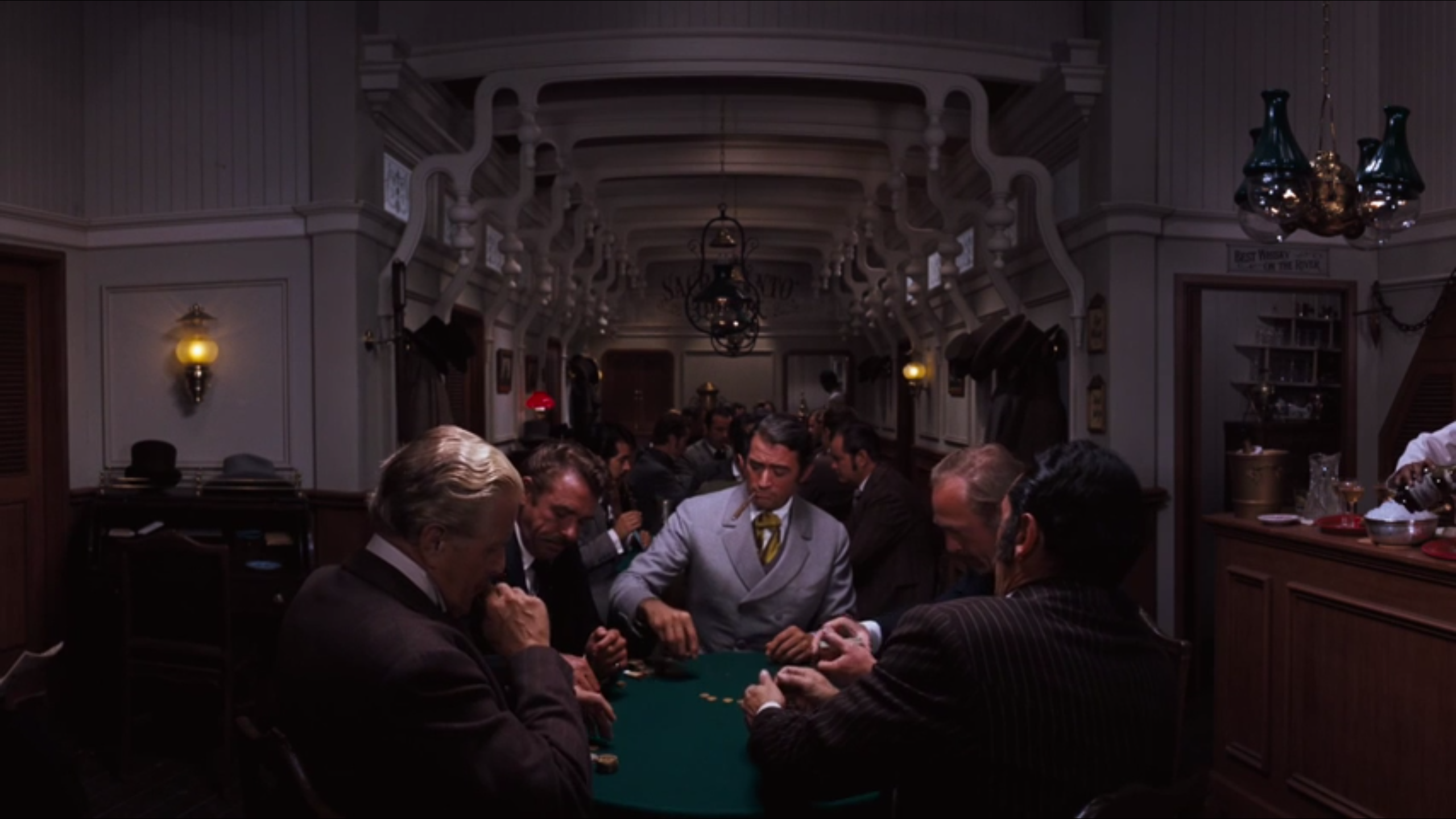
Lily sings in front of practically operatic draped fabrics and enormous candelabras, accompanied by a string quartet and a harp. There’s no way to miss the metaphor for the growing prosperity of the West, now about halfway into being “won.”
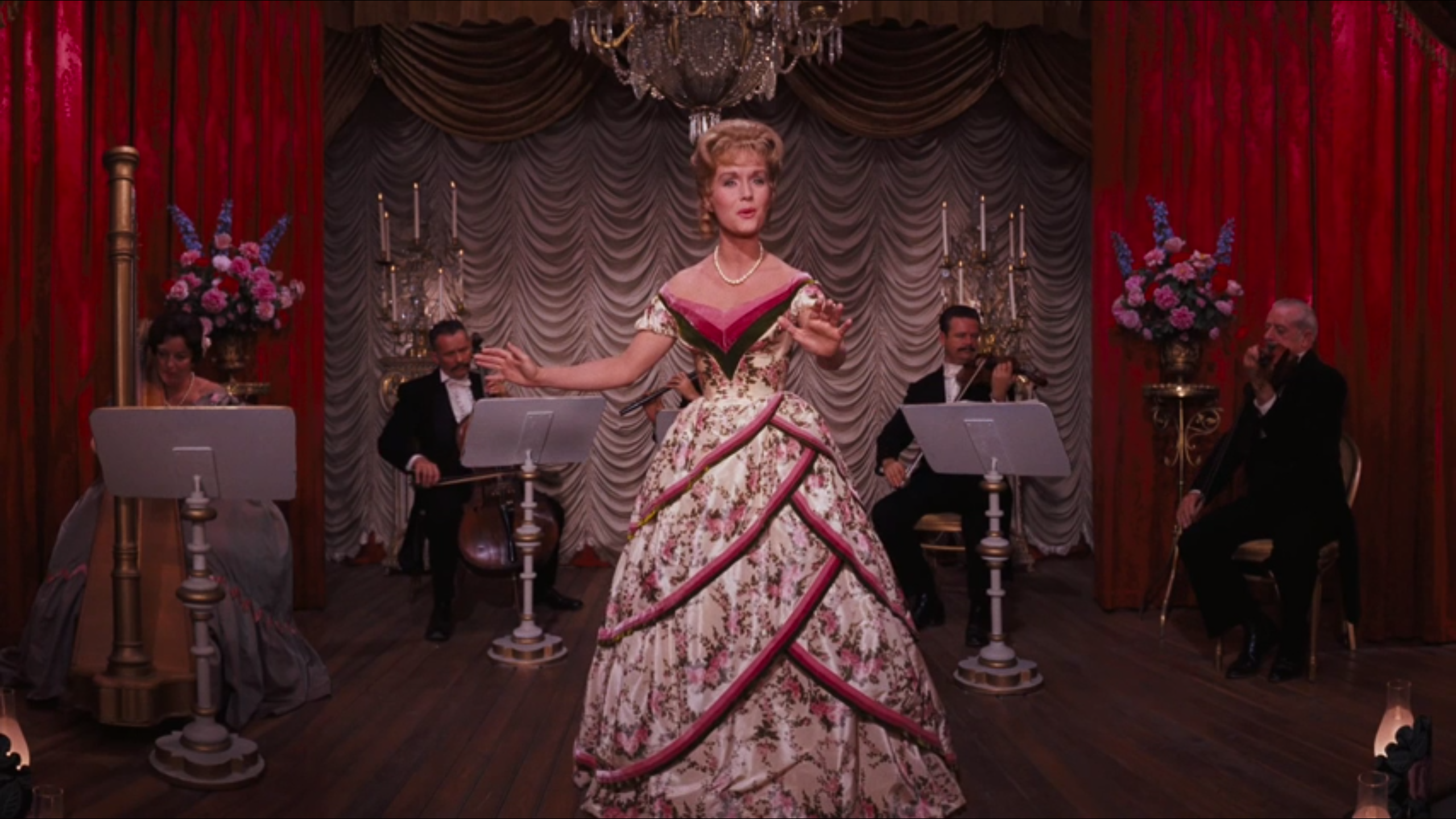
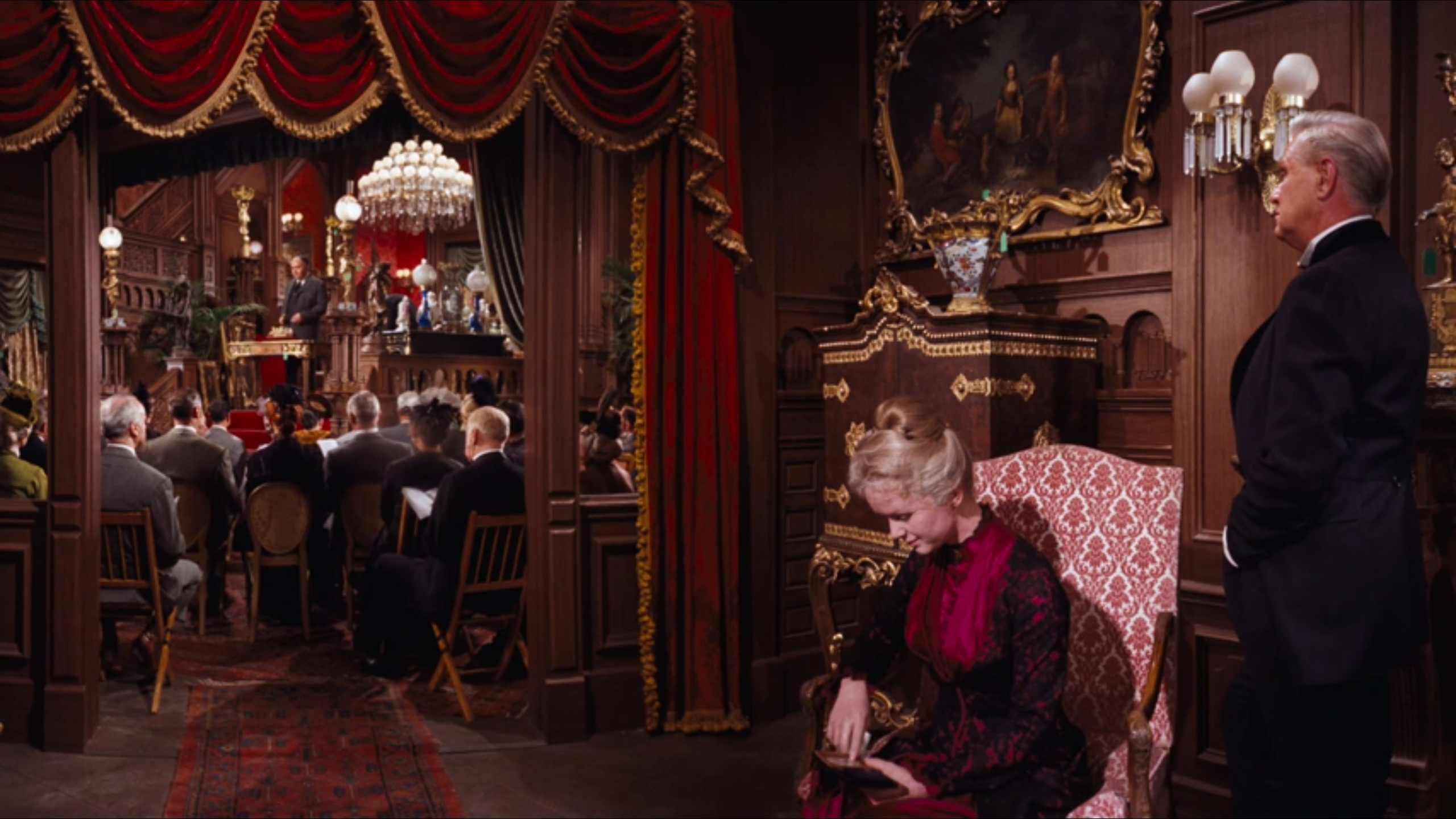
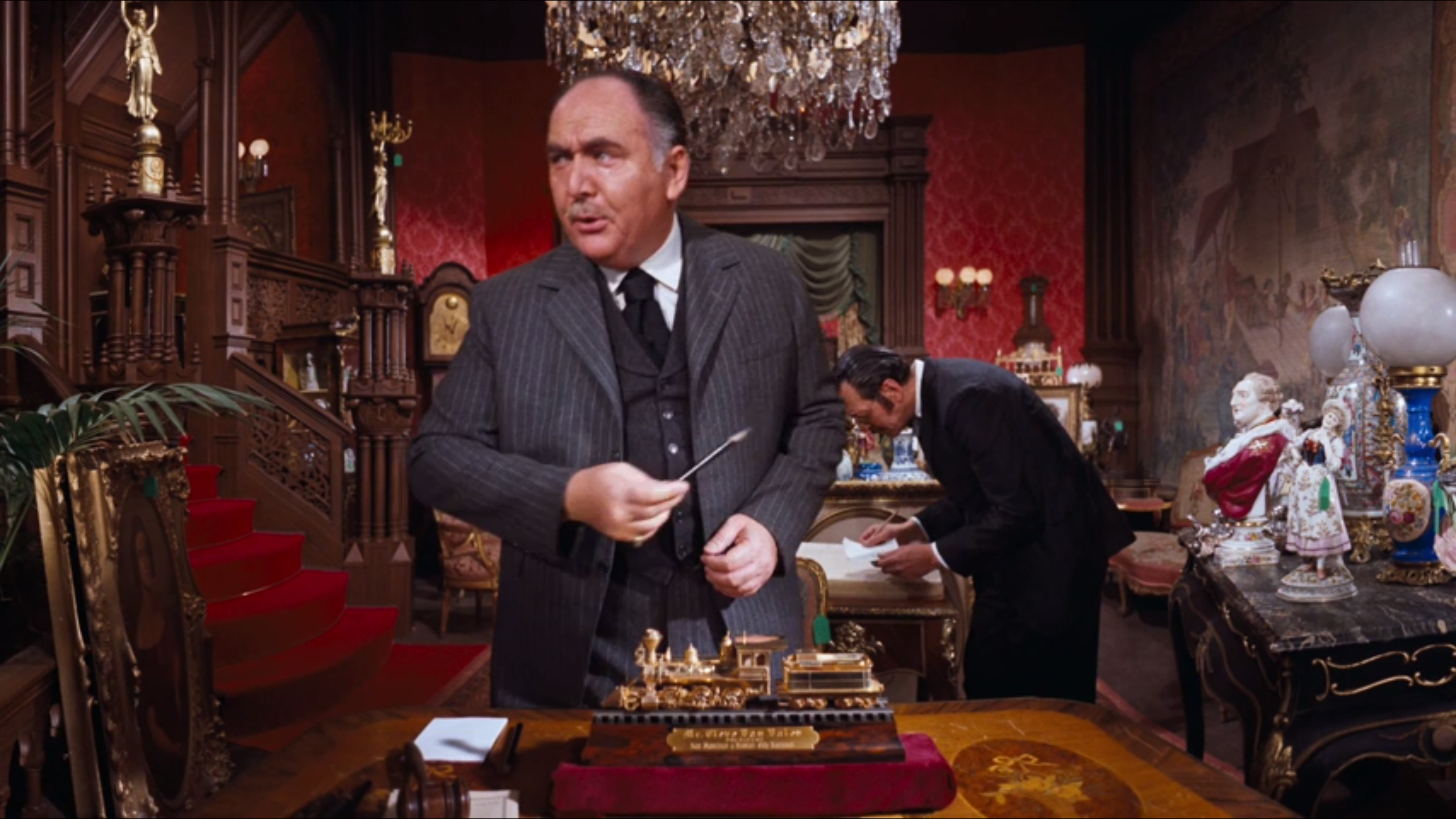
Previously on "The Furniture":
The Exorcist (1973), Carol and Brooklyn (2015), and Batman (1989)



Reader Comments (10)
Here's where i must admit that i've never seen this one but enjoy the writeup. Debbie Reynolds in a saloon sounds right up my alley though.
I LOVE this film and glad to see you turn your eyes on an aspect that isn't always noticable amidst the sprawling grandeur of Cinemascope.
It's uneven but wisely keeps it's focus on generations of the same family to involve the audience in something beside the cavalcade of famous faces passing though. That scene on the riverboat where Debbie sings Greensleeves in front of that small quintet is one of my favorites, it's so rich looking and Debbie looks so beautiful in that dress. She and Gregory Peck make a surprisingly simpatico pairing. They seem so different in their styles and yet their energy works well together. Of course they're complimented in their portion of the story by having Thelma Ritter cracking wise on the sidelines.
Great article as usual, I've never seen this film. It's not like I've seen every western but I can't remember this being an afternoon or late night movie. It sounds like it was an inelegant mash-up of directors, but your descriptions of Hathaway's section sound quite inviting.
Hathaway directed True Grit so it's not too surprising that he showed some imagination with the design. Debbie Reynolds has some interesting costume changes.
Great article as ususal, thanks for sharing
Great article
Nice Article
Regards
Download APK Apps and Games for Android IOS and PC
Geek Peak Software
I do agree with what you say, but I have to say your point can draw a lot of contradictions. Great write up. Thanks for the time and effort. Cheers!
Videoder Download Great article as ususal, thanks for sharing
putty connection manager is a tool that helps you to manage PuTTy sessions. For the erudite, PuTTy should be obvious . It is a Windows client that allows you to manage a remote connection in a UNIX machine connected
Great article as usual, thanks for sharing.....
All pc errors